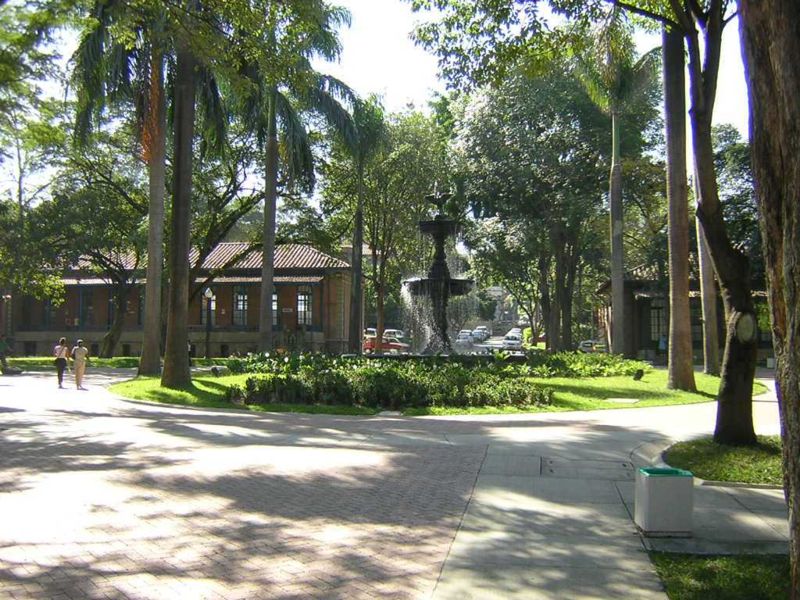Moisés Enghelberg
New York, United States
 |
| Fountain at the Hospital Universitario San Vicente de Paúl |
This is not the story about another hospital, rebuilt from rubble after an earthquake. It is not even a story about perseverance, as much as it is about putting the pieces back together. It is also a story about peculiarity and geometry.
The Hospital San Vicente de Paúl in Medellin, Colombia was built in 1913 to serve the need of the growing township and its working class. It was built in the outskirts of the city, to facilitate the intrinsic connection between the farmers in the hills, which still come to trade during the day to Medellin and the laborers from the surrounding factories and industries. Many of its patients came because of work-related injuries: suturing finger by finger, machete slash after machete slash, and in the most definitive and mournful of situations, an amputation. Perhaps the initial need it served eventually made the institution one of the most celebrated transplant centers in Colombia and Latin America: “Sic Parvis Magna,” as Francis Drake, who knew his fare share of lacerations during his life at sea, would have said. Within the accolades of El Hospital is the first simultaneous pancreas and kidney transplantation, as well as the first heart, and lung transplant in Colombia.1
A distinct mark of the hospital is its architecture. It is of the few remaining hospitals with a horizontal distribution on the American continent. The hospital was designed by Augusto Gavet, who was then Chief Director for the Construction of Health Buildings in France.2 He would never set foot in Colombian soil, and much of his ideas for the project were drawn from images and documents sent by mail. Its structure would have a twofold purpose: One, to diminish the impact of a land with a seismic tradition, and two, to facilitate the flow between the medical structures and the natural surroundings, but at the same time giving the institution a classical European tone. The surgical ward occupies a terrain similar to the distribution of a plantation or finca. This configuration would mimic the rhythm and the dynamic that occupies most of the trade and the livelihood of the people of Medellin. Walking from corner to corner would be as if traversing a field, connecting the doctor not only to the lives of the patients, but also to the overall health of the institution, due to the quality of its ample galleries and spaces. Its architecture still makes us reminisce about a time where land was ample to enjoy and the saturation of urban life did not overwhelm with its characteristic verticality.
During 1979, Medellin suffered one of its most infamous earthquakes, and the general surgery center as well as the center for specialized surgery suffered considerably.2 This put the hospital’s resiliency to the test. The hospital still continues its charitable work uninhibited by the violence the country continues to endure. The guerrilla and armed conflict, the drug war and the socio-political violence that the country has suffered are, if not an obstacle, yet another type of earthquake which to surmount.
References
- Boletín de prensa Ministerio de la Protección Social (November, 28 2006)
- http://hospitaluniversitario.sanvicentefundacion.com/acerca-de-nosotros
MOISES ENGHELBERG, D.O. is a recent graduate of Touro College of Osteopathic Medicine – NY, Harlem. He also obtained a Master’s degree in Interdisciplinary Biological and Physical Sciences from the same institution. He is currently an Ophthalmology Resident in New York. His literary work strives to expand and enrich medical practice by cross-pollinating subtle connections between fields.
Spring 2015 | Sections | Hospitals of Note

Leave a Reply